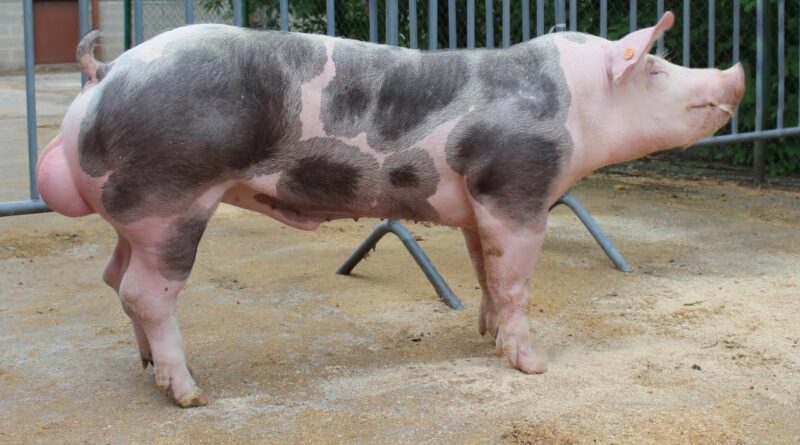what are the 8 proven things done at a piggery??
At a piggery, also known as a pig farm, a variety of activities and tasks are undertaken to raise and manage pigs. These may include feeding and nutrition management, breeding and reproduction, health monitoring and veterinary care, waste management, shelter maintenance, and record-keeping.
1. Feeding:
Ensuring that pigs receive a balanced diet that caters to their specific nutritional requirements across various growth stages is essential for their overall well-being and development. Effective feeding strategies in a piggery are crucial for ensuring optimal growth, health, and productivity of the pigs. This involves selecting the right type of feed, managing feeding methods and equipment, and continuously monitoring and adjusting the diet based on the pigs’ needs.
Types of Feed
Starter Feed: piglets from weaning up to around 25 kg. High in protein (20-22%) and energy.
Grower Feed: For pigs from 25 kg to about 60 kg. Slightly lower in protein (16-18%) but still high in energy.
Finisher Feed: For pigs over 60 kg up to market weight. Protein is reduced further (12-14%) while energy remains high.
Feeding Methods
Dry Feeding: Uses dry mash or pellets. Easier to store and less messy.
Wet Feeding: Combines feed with water or broth. Can improve feed intake and digestion but is messier and may spoil faster.
Ad libitum Feeding: Pigs have constant access to feed. Promotes faster growth but can lead to wastage.
Restricted Feeding: Pigs are fed in specific amounts at set times. Controls growth rates and reduces feed wastage.
2. Breeding:
Managing the mating of pigs to produce piglets, involves selecting breeding pairs and sometimes artificial insemination. Breeding in a piggery requires careful planning, management, and attention to detail to ensure successful reproduction and healthy piglets. By selecting the right breeding stock, using appropriate mating techniques, managing gestation and farrowing, and maintaining detailed records, pig farmers can improve productivity and achieve sustainable operations
Mating Process
Natural Mating: Introduce the sow to the boar during estrus. Ensure a safe environment to prevent injury.
Artificial Insemination: Perform AI 12-24 hours after the onset of estrus and repeat 12 hours later if needed.
3. Housing and Environment Management:
Providing suitable housing, maintaining cleanliness, and ensuring proper ventilation and temperature control.
4. Health Care:
Monitoring the health of pigs, administering vaccinations, and treating illnesses and injuries.
5. Weaning:
Transitioning piglets from mother’s milk to solid food. Weaning is a crucial phase that requires careful management to ensure piglets transition smoothly from milk to solid feed. By preparing adequately before weaning, providing appropriate nutrition and care post-weaning, and closely monitoring health and growth, pig farmers can minimize stress and health issues, promoting the overall well-being and productivity of the piglets.
6. Waste Management:
Managing and disposing of manure and other waste products to maintain a clean environment and comply with regulations.
7. Record Keeping:
Keeping detailed records of each pig’s health, breeding history, and growth to make informed management decisions.
8. Marketing and Sales:
Selling pigs or pork products to markets, slaughterhouses, or direct consumers.
“How long does it take for pigs to reach full size?”
Pigs typically take around 5 to 6 months to reach market weight, which is generally between 240 and 280 pounds (approximately 109 to 127 kilograms). The specific time and weight can vary depending on factors such as breed, diet, health, and overall management practices on the farm.
Here’s a rough breakdown of the growth stages:
1. Birth to Weaning (0-4weeks):
Piglets are usually weaned at about 3 to 4 weeks of age when they weigh around 10 to 15 pounds (4.5 to 6.8 kilograms).
2. Nursery Phase (4-10 weeks):
After weaning, piglets are moved to a nursery where they continue to grow. By the end of this phase, they typically weigh around 50 to 60 pounds (23 to 27 kilograms).
3. Grower Phase (10-16 weeks):
During the grower phase, pigs are transferred to a different area where they continue to grow in size and weight. Typically, at the end of this stage, they reach a weight of around 110 to 150 pounds (50 to 68 kilograms).
4. Finisher Phase (16-24 weeks):
In the final stage of pig farming, which is known as the finisher phase, the pigs are given specially formulated diets that are aimed at optimizing their weight gain until they reach the desired market weight for sale.
